Search the Special Collections and Archives Portal
Search Results
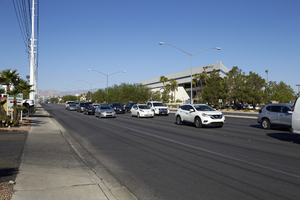
Traffic in front of the NV Energy building, looking west, Las Vegas, Nevada: digital photograph
Date
2017-09-20
Archival Collection
Description
Traffic flows down West Sahara Avenue west of Jones Boulevard in front of the NV Energy building at 6226 West Sahara Avenue.
Image
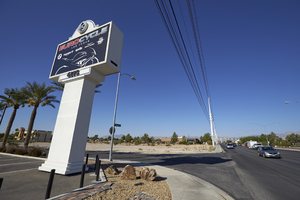
EuroCycle sign and vacant lot along West Sahara Avenue, looking west, Las Vegas, Nevada: digital photograph
Date
2017-09-20
Archival Collection
Description
A sign for EuroCycle of Las Vegas sits along West Sahara Avenue west of Jones Boulevard. A large vacant lot is open west of the EuroCycle facility.
Image
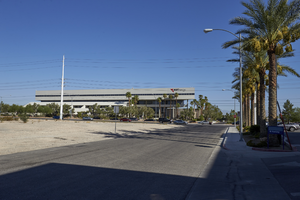
Vacant land and the NV Energy Building on West Sahara Avenue, looking north, Las Vegas, Nevada: digital photograph
Date
2017-09-20
Archival Collection
Description
A vacant parcel of land sits across West Sahara Avenue in front of the NV Energy building at 6226 West Sahara Avenue west of Jones Boulevard.
Image
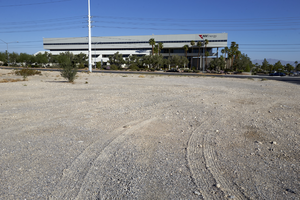
Vacant land and the NV Energy Building on West Sahara Avenue, looking north, Las Vegas, Nevada: digital photograph
Date
2017-09-20
Archival Collection
Description
A vacant parcel of land sits across West Sahara Avenue in front of the NV Energy building at 6226 West Sahara Avenue west of Jones Boulevard.
Image
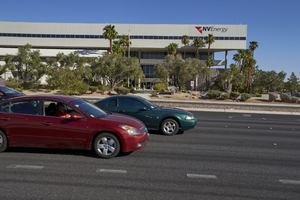
NV Energy Building on West Sahara Avenue, looking north, Las Vegas, Nevada: digital photograph
Date
2017-09-20
Archival Collection
Description
Traffic flows down West Sahara Avenue west of Jones Boulevard in front of the NV Energy building at 6226 West Sahara Avenue.
Image
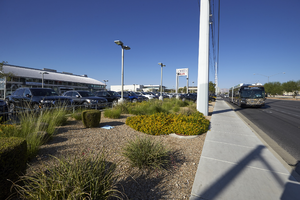
Bus on West Sahara Avenue west of Jones Boulevard, looking west, Las Vegas, Nevada: digital photograph
Date
2017-09-20
Archival Collection
Description
An RTC bus travels down West Sahara Avenue west of Jones Boulevard in front of a car dealership.
Image
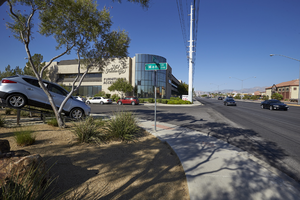
Commercial development on West Sahara Avenue west of Jones Boulevard, looking west, Las Vegas, Nevada: digital photograph
Date
2017-09-20
Archival Collection
Description
Mann Circle separates an auto dealership and a furniture store on West Sahara Avenue west of Jones Boulevard.
Image

Bus stop on West Sahara Avenue east of Torrey Pines Drive, looking east, Las Vegas, Nevada: digital photograph
Date
2017-09-20
Archival Collection
Description
An RTC Sahara Express bus stop sits along West Sahara Avenue east of Torrey Pines Drive.
Image
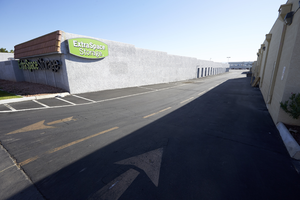
Extra Space Storage on Torrey Pines Drive north of West Sahara Avenue, looking east, Las Vegas, Nevada: digital photograph
Date
2017-09-20
Archival Collection
Description
Commercial development on Torrey Pines Drive north of West Sahara Avenue includes this Extra Space Storage facility, which shares an alley with the shopping center to its south.
Image
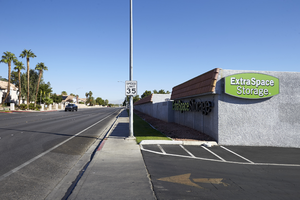
Development along on Torrey Pines Drive north of West Sahara Avenue, looking north, Las Vegas, Nevada: digital photograph
Date
2017-09-20
Archival Collection
Description
Torrey Pines Drive north of West Sahara Avenue has multi-family and single family housing along with commercial development like this Extra Space Storage facility.
Image
Pagination
Refine my results
Content Type
Creator or Contributor
Subject
Archival Collection
Digital Project
Resource Type
Year
Material Type
Place
Language
Records Classification
